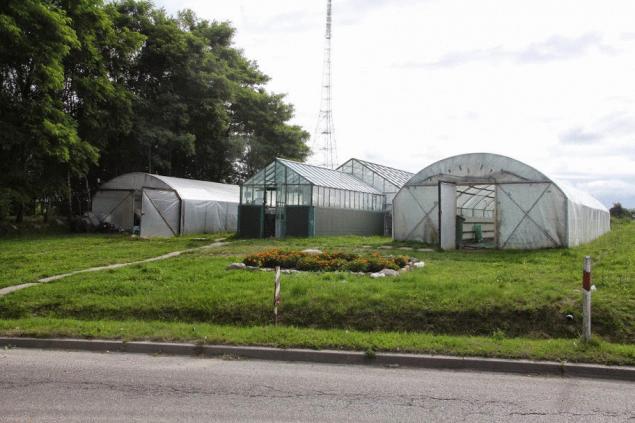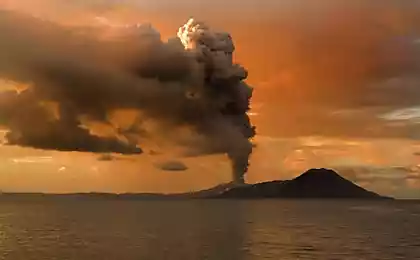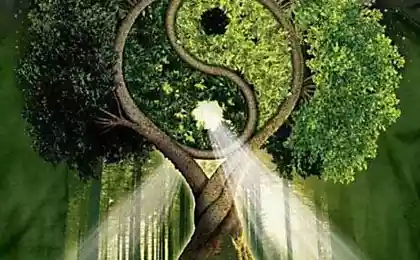694
Environmentally friendly method of energy production in the landfill

Slupsky dump – a favorite place for feeding birds
Thanks to bacteria
Landfill gas is one of the varieties of biogas. He turns on the old, already mothballed the site. In fact, this mixture of methane (about 50 percent), carbon dioxide (about 50 percent), and small amounts of hydrogen sulfide and other gases formed at each landfill in the process of decay of its contents.
Typically, such a gas obrazujas to the junkyard and freely escapes into the atmosphere and thereby causing global warming. Environmentalists are worried that the methane is able to 21 times stronger than carbon dioxide to create a greenhouse effect. If methane is to hold in place and to burn in engines (that is to oxidize to carbon dioxide and water vapor), it is possible to kill two birds with one stone: to reduce the greenhouse effect and to produce electrical and thermal energy.
The benefit is tempting, therefore, technology is rampant in the Poland. Firms that in Poland such projects are private, but since we are talking about the solution of complex environmental problems (waste management, reducing the greenhouse effect, the creation of electricity from renewable sources), it is part of the necessary funds for the implementation of such projects it is easy to obtain from the European Union.
According to the 2012, in Poland, it was 90 landfills which introduced this technology. The total electric capacity of all power plants operating on landfill gas – more than 60 megawatts of electricity. This is about half of the total power (112 MW) of electricity Poland produced from biogas (biogas is also produced in the process of purification of waste water, fermentation waste crop and livestock production). In the share of the total installed capacity of Polish power plants, this amounts to 0.3 percent. More industrialized Germany sets a goal for 2020 to generate more than 3,700 MW of electrical power, working on all types of biogas. More than a third of all electrical power in Belarus.
However, to organize the production of landfill biogas may not per polygon – in case of small installation costs are not recouped.
And what have we? In Belarus similar to the Polish climatic conditions and technologies of waste management. That is why the technology for producing electricity in landfills is also promising. At the moment there are three polygon: Trostenetsky and North near Minsk (with a capacity of around 3 MW each) landfill near Vitebsk (current capacity of 0,85 MW) and there has been talk about construction in other cities. How does it work?
Get gas is inhibited on the ground. On top of the landfill is covered with earth and planted with lawn grass. Sometimes the ground is laid and additional plastic wrap. This “roof”, with a thickness of about one meter, does not allow gas to migrate freely into the atmosphere. It is clear that isolation creates the best temperature, especially cold winters, thereby providing a more uniform gas production.
To drain from the landfill gas, it is necessary to “stitch” it with lots of vertical hollow plastic tubes. The number of tubes to landfill from fifty. Through the holes in the walls of the pipes are all produced inside the landfill gases get inside. The tube is connected to a common backbone, and through it the gas pumps pumped out.
The polygon may “give up the Ghost” 30-70 years. After 25 years, the production of methane begins to gradually decline.
When extracting landfill gas occurs and another extra plus – improved fire safety of the landfill.
Plastic lines are pumping gas

New pit waterproofed from the flow of the "juice" of the landfill into the soil. The collected liquid is used for irrigation of closed landfill. This improves fermentation and methane production.

The Torun area, which also carried out the development of landfill gas to be conserved and planted with lawn grass

Utilization of gas.
In Slupsk the produced gas is burned in the power generators here in the diesel-generators. This is the most simple technology. It allows almost no clean landfill gas from other impurities – generator to the quality of the mixture unpretentious.
The second option is to do as well as the Scandinavians. For example, in Norwegian Oslo, some cities in Sweden, the buses run on landfill biogas. For this purpose, the gas must docility, compress up to 100-120 atmospheres and pumped into the gas tanks of buses. The requirements for such a gas above, you will need a certificate. But in this case, the city bus runs completely on renewable energy. For European cities, having a strategy for transition to renewable energy, it is important. The buses of Oslo this gas is 40 cents cheaper per litre of diesel equivalent required. Yes and alteration of bus is required minimal.
The third method of disposal of landfill biogas is the supply of city gas network. It also requires polishing, more strict certificate and higher production volumes.
The average “power” of Polish landfills 0,5 MW of electricity. In Slupsk produce enough gas to produce power 0,400 MW of electricity. For comparison, CHP plant 3 in Minsk has a capacity of approximately 500 MW. Power of 0.4 MW, which is more than 3 million kWh of electricity each year, enough to power electricity to the entire polygon, and the remaining part of electricity sold to regional electricity companies at a premium “green” factor.
On the range three diesel generator. Unlike automotive engines, these diesel generators work in the same mode at the same speed. This provides a high efficiency (43 percent) and high environmental performance (minimum greenhouse gas emissions). The combustion of landfill gas is not formed soot and sulfur oxides, which are usually emitted by burning diesel fuel.
Generators are expensive, so they required a number of usually rely on the utilization of secondary gas flow. And if at some point in time gas the landfill produces more than generators are able to burn, the gas is either stored in a special tank (making installation more expensive), or vented into the atmosphere and incinerated by torch. Power generation gas Slupsky regulate ground water irrigation of the landfill.
When electric power of 0.4 MW and an efficiency of 40 percent generators Slupsky landfill also form around 0.6 MW of thermal power. This is more than enough for the domestic needs of the plant for heating, water heating. Specific technological processes requiring heat at the station there, so that the thermal energy is used for heating floral greenhouses. Heat energy can be given and other consumers, but the factory is located quite far from the city, a number of other productions there.
Each of the three diesel generators installed in a separate room

Sometimes the gas is not directly fed into the generator, and is stored in the storage device. For example, here in this. Pressure, typically slightly above atmospheric, but a large volume. In Slupsk this drive not

Most plant need a lot of electricity. For example, this sorting machine consumes 40 kilowatt – tenth of the electricity that produces the station

Heat and power is enough for domestic needs of the whole plant. Kitchen for the workers

On the station every day to wash the clothes of workers. Here is the Laundry

The heat generated by the plant and used for drying clothes.
Surplus thermal energy heated greenhouses

Source: green-journey.com























